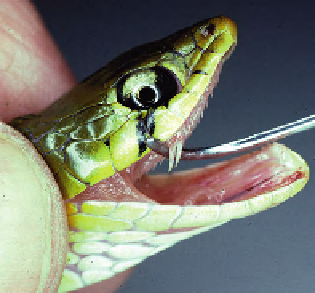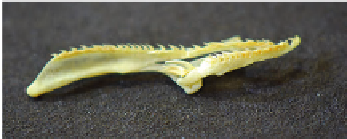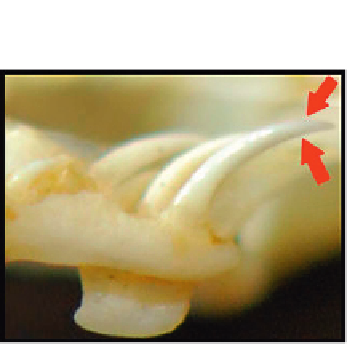Biology Reference
In-Depth Information
(C)
Plate 4.45C.
Enlarged posterior maxillary teeth of the red-necked keel-back (
Rhabdophis
subminiatus
)
. Note the markedly enlarged, ungrooved posterior maxillary teeth
(also see Plates 4.46E-G).
Plate 4.45C, photo copyright to David A. Warrell.
(E)
(F)
(G)
Plate 4.46
(E-G) Maxilla and posterior enlarged maxillary teeth of
R. tigrinus lateralis
,
Korea.
The posterior maxillary teeth are enlarged, but, unlike other hazard level 1 species
(
Dispholidus
and
Thelotornis
), lack grooves or any other dentitional modifications (see Plate
4.46G, arrows). “Quick release” bites by these snakes occasionally may not be medically
significant, but some brief bites have caused life-threatening envenomations.
Plate 4.46E-G, AMNH #R148038, photos copyright to Arie Lev.
to alveolar insertion. The brief bite from this snake produced a severe consumptive
coagulopathy with DIC in a 57-year-old, 82-kg male (Mittleman and Goris, 1974).
In some non-front-fanged colubroids, selection for increased oral glandular size
may have occurred in snakes whose mid- or posteriorly positioned maxillary teeth







